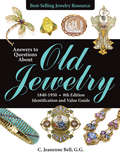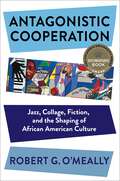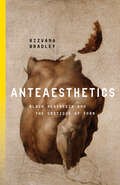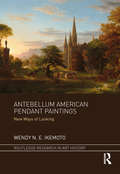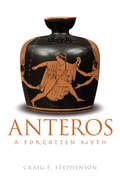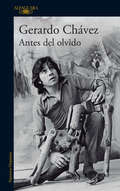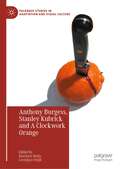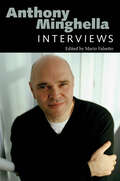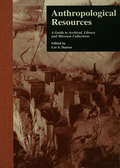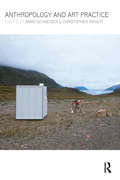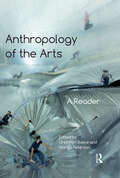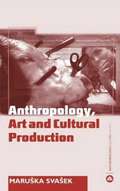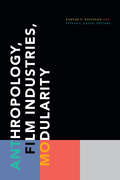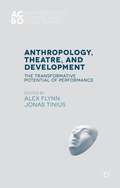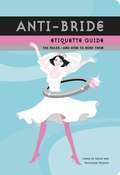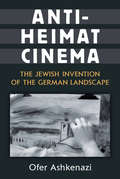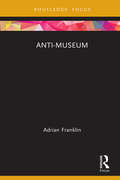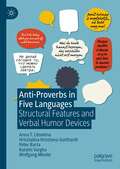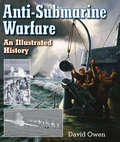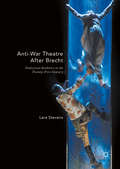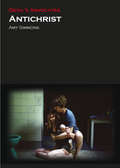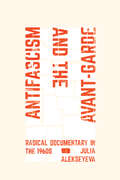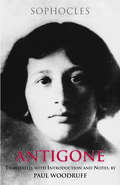- Table View
- List View
Answers in the Form of Questions: A Definitive History and Insider's Guide to Jeopardy!
by Claire McNearWhat is the smartest, most celebrated game show of all time? In this insider's guide, discover the rich history of Jeopardy! -- the beloved game show that has shaped our culture and entertained audiences for years.Jeopardy! is a lot of things: record-setting game show, beloved family tradition, and proving ground for many of North America's best and brightest. Nearly four decades into its current edition, Jeopardy! now finds itself facing unprecedented change.This is the chronicle of how the show became a cross-generational touchstone and where it's going next. ANSWERS IN THE FORM OF QUESTIONS dives deep behind the scenes, with longtime host Alex Trebek talking about his life and legacy and the show's producers and writers explaining how they put together the nightly game. Readers will travel to bar trivia showdowns with the show's biggest winners and training sessions with trivia whizzes prepping for their shot onstage. And they'll discover new tales of the show's most notable moments-like the time the Clue Crew almost slid off a glacier-and learn how celebrity cameos and Saturday Night Live spoofs built a television mainstay. ANSWERS IN THE FORM OF QUESTIONS looks to the past -- and the future -- to explain what Jeopardy! really is: a tradition unlike any other.
Answers to Questions About Old Jewelry, 1840-1950: Identification and Value Guide
by C. Jeanenne BellA Jewelry ClassicFor three decades, Answers to Questions About Old Jewelry has served as the most respected and authoritative reference to the subject of vintage jewelry on the market. The new edition of this timeless classic finds acclaimed jewelry expert C. Jeanenne Bell at her best - sharing her impressive understanding of the subject with unbridled passion for her life-long pursuit.Offering significant historical information and lavish images ofremarkable pieces, this best-selling guide to antique jewelry takes you on a beautiful and edifying adventure. Bell's historical sense, coupled with her keen eye for detail and value, makes her work a cherished addition to the library for both the beginning or veteran jewelry collector.This new edition features nearly 1,000 all-new color photographs of the most collectible jewelry today from 1840 to 1950, fully vetted values, and offers indispensable insight for various jewelry styles, including:VictorianEdwardian and Egyptian RevivalArt Nouveau and Art DecoRetro ModernBakelite, Costume, Mexican and ModernistA former appraiser for "Antiques Roadshow," Bell also provides additional information on maker's marks, trademarks, designer marks, and circa dating clues.
Antagonistic Cooperation: Jazz, Collage, Fiction, and the Shaping of African American Culture (Leonard Hastings Schoff Lectures)
by Robert O'MeallyRalph Ellison famously characterized ensemble jazz improvisation as “antagonistic cooperation.” Both collaborative and competitive, musicians play with and against one another to create art and community. In Antagonistic Cooperation, Robert G. O’Meally shows how this idea runs throughout twentieth-century African American culture to provide a new history of Black creativity and aesthetics.From the collages of Romare Bearden and paintings of Jean-Michel Basquiat to the fiction of Ralph Ellison and Toni Morrison to the music of Louis Armstrong and Duke Ellington, O’Meally explores how the worlds of African American jazz, art, and literature have informed one another. He argues that these artists drew on the improvisatory nature of jazz and the techniques of collage not as a way to depict a fractured or broken sense of Blackness but rather to see the Black self as beautifully layered and complex. They developed a shared set of methods and motives driven by the belief that art must involve a sense of community. O’Meally’s readings of these artists and their work emphasize how they have not only contributed to understanding of Black history and culture but also provided hope for fulfilling the broken promises of American democracy.
Anteaesthetics: Black Aesthesis and the Critique of Form (Inventions: Black Philosophy, Politics, Aesthetics)
by Rizvana BradleyIn Anteaesthetics, Rizvana Bradley begins from the proposition that blackness cannot be represented in modernity's aesthetic regime, but is nevertheless foundational to every representation. Troubling the idea that the aesthetic is sheltered from the antiblack terror that lies just beyond its sanctuary, Bradley insists that blackness cannot make a home within the aesthetic, yet is held as its threshold and aporia. The book problematizes the phenomenological and ontological conceits that underwrite the visual, sensual, and abstract logics of modernity. Moving across multiple histories and geographies, artistic mediums and forms, from nineteenth-century painting and early cinema, to the contemporary text-based works, video installations, and digital art of Glenn Ligon, Mickalene Thomas, and Sondra Perry, Bradley inaugurates a new method for interpretation—an ante-formalism which demonstrates how black art engages in the recursive deconstruction of the aesthetic forms that remain foundational to modernity. Foregrounding the negativity of black art, Bradley shows how each of these artists disclose the racialized contours of the body, form, and medium, even interrogating the form that is the world itself. Drawing from black critical theory, Continental philosophy, film and media studies, art history, and black feminist thought, Bradley explores artistic practices that inhabit the negative underside of form. Ultimately, Anteaesthetics asks us to think philosophically with black art, and with the philosophical invention black art necessarily undertakes.
Antebellum American Pendant Paintings: New Ways of Looking (Routledge Research in Art History)
by Wendy N. IkemotoAntebellum American Pendant Paintings: New Ways of Looking marks the first sustained study of pendant paintings: discrete images designed as a pair. It opens with a broad overview that anchors the form in the medieval diptych, religious history, and aesthetic theory and explores its cultural and historical resonance in the 19th-century United States. Three case studies examine how antebellum American artists used the pendant format in ways revelatory of their historical moment and the aesthetic and cultural developments in which they partook. The case studies on John Quidor’s Rip Van Winkle and His Companions at the Inn Door of Nicholas Vedder (1839) and The Return of Rip Van Winkle (1849) and Thomas Cole’s Departure and Return (1837) shed new light on canonical antebellum American artists and their practices. The chapter on Titian Ramsay Peale’s Kilauea by Day and Kilauea by Night (1842) presents new material that pushes the geographical boundaries of American art studies toward the Pacific Rim. The book contributes to American art history the study of a characteristic but as yet overlooked format and models for the discipline a new and productive framework of analysis focused on the fundamental yet complex way images work back and forth with one another.
Anteros: A Forgotten Myth
by Craig E. StephensonAnteros: A Forgotten Myth explores how the myth of Anteros disappears and reappears throughout the centuries, from classical Athens to the present day, and looks at how the myth challenges the work of Freud, Lacan, and Jung, among others. It examines the successive cultural experiences that formed and inform the myth and also how the myth sheds light on individual human experience and the psychoanalytic process. Topics of discussion include: Anteros in the Italian Renaissance, the French Enlightenment and English Modernism psychologizing Anteros: Freud, Lacan, Girard, and Jung three anterotic moments in a consulting room. This book presents an important argument at the boundaries of the disciplines of analytical psychology, psychoanalysis, art history, and mythology. It will therefore be essential reading for all analytical psychologists and psychoanalysts as well as art historians and those with an interest in the meeting of psychoanalytic thought and mythology.
Antes del olvido: Memorias
by Gerardo Chávez"Ha tenido una vida aventurera, difícil y, como muchos pintores, es un hombre sólidamente asentado sobre la tierra firme, con raícesen las cosas y unos sentidos ávidos de realidad. El mundo que ha creado con sus pinceles, sin embargo, es todo imaginación, sensibilidad, poesía…". Mario Vargas Llosa Gerardo Chávez es una leyenda en la historia de la plástica peruana y latinoamericana. Sin embargo, pocos son los que conocen la historia del niño que a los nueve años comenzó a ganarse la vida y, a los once, ya se había trazado una meta: ser un artista. Escritascon transparencia y humanidad, estas memorias en primera persona son un recorrido por la vida de un artista de indoblegable vocacióncreadora: sus juegos de infancia en Paiján, su atribulada adolescencia en Trujillo, sus años de aprendizaje en Bellas Artes, su breve paso por el surrealismo, su estadía en París, su amistad con los artistas más icónicos de la época, como Roberto Matta y WilfredoLam, sus museos en el Perú, sus amores y su familia, y, como norte de su existencia, su infatigable compromiso con la cultura de supaís. Antes del olvido traza las andanzas de un artista vital a quien el historiador y crítico francés Patrick Waldberg señaló como "uno de los grandes fabuladores de nuestro tiempo".
Anthony Burgess, Stanley Kubrick and A Clockwork Orange (Palgrave Studies in Adaptation and Visual Culture)
by Matthew Melia Georgina OrgillThis book brings together a diverse range of contemporary scholarship around both Anthony Burgess’s novel (1962) and Stanley Kubrick’s film, A Clockwork Orange (US 1971; UK 1972). This is the first book to deal with both together offering a range of groundbreaking perspectives that draw on the most up to date, contemporary archival and critical research carried out at both the Stanley Kubrick Archive, held at University of the Arts London, and the archive of the International Anthony Burgess Foundation. This landmark book marks both the 50th anniversary of Kubrick’s film and the 60th anniversary of Burgess’s novel by considering the historical, textual and philosophical connections between the two. The chapters are written by a diverse range of contributors covering such subjects as the Burgess/Kubrick relationship; Burgess’s recently discovered ‘sequel’ The Clockwork Condition; the cold war context of both texts; the history of the script; the politics of authorship; and the legacy of both—including their influence on the songwriting and personas of David Bowie!
Anthony Minghella: Interviews (Conversations with Filmmakers Series)
by Mario FalsettoAnthony Minghella: Interviews is an illuminating anthology of in-depth conversations with this important contemporary film director and producer. The collection explores Minghella's ideas on every aspect of the cinematic creative process including screenwriting, acting, editing, the use of music in film, and other topics concerning the role of the film director. Minghella (1954–2008) was a highly regarded British playwright (Made in Bangkok), and television writer (Inspector Morse) before turning to film directing with his quirky, highly regarded first film, Truly, Madly, Deeply, in 1990. He went on to direct an extraordinary trilogy of large-scale films, all adapted from significant works of contemporary literature. Minghella's 1996 adaptation of Michael Ondaatje's poetic novel The English Patient was the director's most critically and commercially successful film and went on to win dozens of awards around the world, including nine academy awards. Minghella followed this film with his entertaining, elegant adaptation of Patricia Highsmith's The Talented Mr. Ripley, a film that enjoyed great critical and commercial success and featured some of the best acting of the 1990s by its talented cast of young, rising stars, Jude Law, Matt Damon, Gwyneth Paltrow, and Philip Seymour Hoffman. Minghella's ambitious adaptation of Charles Frazier's American Civil War romance, Cold Mountain, was released in 2003, and firmly marked Minghella as a director of intimate, yet large-scale epic cinema worthy of David Lean. Although Minghella was a successful film director and producer, he was also an important part of the cultural life of the U.K. He was awarded a CBE (Commander of the British Empire) in 2001 for his contributions to culture, and he was Chairman of the Board of Governors of the British Film Institute from 2004 to 2007.
Anthropocosmic Theatre: Rite in the Dynamics of Theatre (Contemporary Theatre Studies #Vol. 13.)
by Nichos NunezFirst published in 1997. Routledge is an imprint of Taylor & Francis, an informa company.
Anthropological Resources: A Guide to Archival, Library, and Museum Collections (Sociology/Psychology/Reference #Vol. 884)
by S. J. Sol Tax Lee S. Dutton Michele Calhoun Francis X. Grollig Thomas L. Mann Hans E. Panofsky Margo L. Smith Christopher WintersFirst published in 1999. Routledge is an imprint of Taylor & Francis, an informa company.
Anthropology and Art Practice: Contemporary Ethnographic Practice (Contemporary Ethnographic Practice Ser.)
by Christopher Wright Arnd SchneiderAnthropology and Art Practice takes an innovative look at new experimental work informed by the newly-reconfigured relationship between the arts and anthropology. This practice-based and visual work can be characterised as 'art-ethnography'. In engaging with the concerns of both fields, this cutting-edge study tackles current issues such as the role of the artist in collaborative work, and the political uses of documentary. The book focuses on key works from artists and anthropologists that engage with 'art-ethnography' and investigates the processes and strategies behind their creation and exhibition.The book highlights the work of a new generation of practitioners in this hybrid field, such as Anthony Luvera, Kathryn Ramey, Brad Butler and Karen Mizra, Kate Hennessy and Jennifer Deger, who work in a diverse range of media - including film, photography, sound and performance. Anthropology and Art Practice suggests a series of radical challenges to assumptions made on both sides of the art/anthropology divide and is intended to inspire further dialogue and provide essential reading for a wide range of students and practitioners.
Anthropology of the Arts: A Reader
by Marina Peterson Gretchen BakkeA comprehensive introduction to the anthropology of the arts, this is the first textbook to go beyond visual art to cover the arts more broadly. Drawing together media such as painting, sound, performance, video, and film, it presents a clear overview of the cross-cultural human experience of art.Introducing students to the basics as well as the latest scholarship, the book features:- 45 chapters which combine classic texts from anthropologists such as Pierre Bourdieu, Claude Lévi-Strauss, Margaret Mead, Bronislaw Malinowski, Alfred Gell, Franz Boas, and Mary Douglas with recent scholarship by George Marcus, Tim Ingold, Roger Sansi, Christopher Pinney, Georgina Born, and others- Both theoretical and ethnographic readings, with coverage ranging from Bali, Papua New Guinea, Egypt, sub-Saharan Africa, Eastern Europe, and Australia to the United States- Introductory materials, ethnographic exercises, further reading ideas, and alternative suggestions for navigating the content based on medium, geography, theory, or ethnographyDesigned for classroom use, Anthropology of the Arts is invaluable for teaching and learning. Engaging and accessible, it is essential reading for students in anthropology of art, anthropology of design, anthropology of performance, and related courses.
Anthropology, Art and Cultural Production
by Maruska SvasekThis book provides an introduction to anthropological perspectives on art. Svasek defines art as a social process. We study not only the artefacts themselves and the values attributed to them, but also the process of production and its wider context. Providing a critical overview of various anthropological theories of art, Svasek offers a new perspective which centres on the analysis of commoditisation, aestheticisation and object agency. She explores the process of collecting and exhibiting art works and how this relates to art's production, distribution and consumption in an increasingly global market. The book outlines the significance of art and aesthetics in everyday life, and examines the shifting boundaries between art and other categories such as kitsch, souvenirs, propaganda and pornography. Finally, Svasek argues for an anthropological perspective that links the production and consumption of artefacts to political, religious and other cultural processes. Ideal as a teaching text, this book gives a detailed overview of themes that are central to the fields of art history, art sociology and cultural studies.
Anthropology, Film Industries, Modularity
by Ramyar D. Rossoukh and Steven C. CatonFrom Bangladesh and Hong Kong to Iran and South Africa, film industries around the world are rapidly growing at a time when new digital technologies are fundamentally changing how films are made and viewed. Larger film industries like Bollywood and Nollywood aim to attain Hollywood's audience and profitability, while smaller, less commercial, and often state-funded enterprises support various cultural and political projects. The contributors to Anthropology, Film Industries, Modularity take an ethnographic and comparative approach to capturing the diversity and growth of global film industries. They outline how modularity—the specialized filmmaking tasks that collectively produce a film—operates as a key feature in every film industry, independent of local context. Whether they are examining the process of dubbing Hollywood films into Hindi, virtual reality filmmaking in South Africa, or on-location shooting in Yemen, the contributors' anthropological methodology brings into relief the universal practices and the local contingencies and deeper cultural realities of film production.Contributors. Steven C. Caton, Jessica Dickson, Kevin Dwyer, Tejaswini Ganti, Lotte Hoek, Amrita Ibrahim, Sylvia J. Martin, Ramyar D. Rossoukh
Anthropology, Theatre, and Development
by Alex Flynn Jonas TiniusFrom Pussy Riot and the Arab Spring to Italian mafia dance, this collection provides an interdisciplinary analysis of relational reflexivity in political performance. By putting anthropological theory into dialogue with international development scholarship and artistic and activist practices, this book highlights how aesthetics and politics interrelate in precarious spheres of social life. The contributors of this innovative interdisciplinary volume raise questions about the transformativepotential of participating in and reflecting upon political performances both as individual and as collectives. They also argue that such processes provide a rich field and new pathways for anthropological explorations of peoples' own reflections on humanity, sociality, change, and aspiration. Reflecting on political transformations through performance puts centre stage the ethical dimensions of cultural politics and how we enact political subjectivity.
Anti-Bride Etiquette Guide
by Kathleen Hughes Carolyn GerinFollowing the best-selling Anti-Bride Guide and Bridesmaid's Guide down the aisle comes the essential, smart, and sassy etiquette guide for the not-so-traditional bride. This feisty and straightforward advice book fills a huge gap in the wedding etiquette market. A riot to read and packed with bold illustrations, it walks the bride through everything from invitations and seating arrangements to money matters and family feuds. Whether fielding classic conundrumswho pays for whator decidedly modern situationsthe maid of honor is a manAnti-Bride Etiquette Guide offers sensitive advice for skillfully navigating the rough spots. Inventive solutions for dodging outmoded traditions ensure that brides will keep everyone from grooms to grandmothers happy. For the bride who doesn't want to sacrifice the wedding of her dreams or her loved ones' feelings, Anti-Bride Etiquette Guide has the answers.
Anti-Heimat Cinema: The Jewish Invention of the German Landscape (Social History, Popular Culture, And Politics In Germany)
by Ofer AshkenaziAnti-Heimat Cinema: The Jewish Invention of the German Landscape studies an overlooked yet fundamental element of German popular culture in the twentieth century. In tracing Jewish filmmakers’ contemplations of “Heimat”—a provincial German landscape associated with belonging and authenticity—it analyzes their distinctive contribution to the German identity discourse between 1918 and 1968. In its emphasis on rootedness and homogeneity Heimat seemed to challenge the validity and significance of Jewish emancipation. Several acculturation-seeking Jewish artists and intellectuals, however, endeavored to conceive a notion of Heimat that would rather substantiate their belonging. This book considers Jewish filmmakers’ contribution to this endeavor. It shows how they devised the landscapes of the German “Homeland” as Jews, namely, as acculturated “outsiders within.” Through appropriation of generic Heimat imagery, the films discussed in the book integrate criticism of national chauvinism into German mainstream culture from World War I to the Cold War. Consequently, these Jewish filmmakers anticipated the anti-Heimat film of the ensuing decades, and functioned as an uncredited inspiration for the critical New German Cinema.
Anti-Museum (Museums in Focus)
by Adrian FranklinAnti-Museum charts the development of the anti-museum as a concept and as it has been realised in practice. Drawing on a range of case studies, including the New Museum and PS1 in New York, Mona in Australia, Art42 in Paris and Donald Judd’s Marfa, the book assesses their potential to engage museum publics in new ways. Anti-museums seek to breathe relational and theatricalised vitality into the objects they exhibit, by connecting them to the contexts of their making, to their social life outside the museum, to visitors' lives via their transformative capacities for change, and by being a place of dialogue, exchange and transformation, rather than instruction. Documenting the ways in which they have been created by artists, collectors, and curators, the book also examines the extent to which anti-museums connect with other museums through the exchange of values and resources. Critically, it asks whether, after some 40 years of ‘new museology’, such institutions are still able to offer something fresh and valuable. Anti-Museum provides a sharp and incisive account of the anti-museum as it has been imagined, realised and experienced, and as it has relevance for understanding and working in the contemporary museum world. As such, the book will be of great interest to scholars and students engaged in the study of museums, cultural economy, inclusive urban regeneration, the democratisation of art and contemporary art. It should also appeal to museum professionals around the world.
Anti-Proverbs in Five Languages: Structural Features and Verbal Humor Devices
by Wolfgang Mieder Anna T. Litovkina Hrisztalina Hrisztova-Gotthardt Péter Barta Katalin VarghaThis book is the first comparative study of English, German, French, Russian and Hungarian anti-proverbs based on well-known proverbs. Proverbs are by no means fossilized texts but are adaptable to different times and changed values. While anti-proverbs can be considered as variants of older proverbs, they can also become new proverbs reflecting a more modern worldview. Anti-proverbs are therefore a lingo-cultural phenomenon that deserves the attention of cultural and literary historians, folklorists, linguists, and general readers interested in language and wordplay.
Anti-Submarine Warfare: An Illustrated History
by David OwenA deep dive into the tactics and technology used to defend against submarines—from the opening of the First World War through World War II and beyond. The submarine was undoubtedly the most potent purely naval weapon of the twentieth century. In two world wars, enemy underwater campaigns were very nearly successful in thwarting Allied hopes of victory—indeed, annihilation of Japanese shipping by US Navy submarines is an indicator of what might have been. That the submarine was usually defeated is a hugely important story in naval history, yet this is the first book to treat the subject as a whole in a readable and accessible manner. It concerns individual heroism and devotion to duty, but also ingenuity, technical advances and originality of tactical thought. What developed was an endless battle between forces above and below the surface, where a successful innovation by one side eventually produces a countermeasure by the other in a lethal struggle for supremacy. Development was not a straight line: wrong ideas and assumptions led to defeat and disaster. &“Iconography (with dozens of photographs and often large-format diagrams), a vast bibliography and a complete and documented general approach make this volume a work of great quality and of great interest for all enthusiasts and scholars of this very interesting subject.&”—Storia Militare &“The modeller will not only find the text engaging but there is a superb collection of photographs and illustrations which of course include submarines, corvettes and destroyers. Subjects which the modeller increasingly appreciates. Highly recommended.&”—Model Boats
Anti-War Theatre After Brecht: Dialectical Aesthetics in the Twenty-First Century
by Lara StevensExaminingthe ways in which contemporary Western theatre protests against the 'War onTerror', this book analyses six twenty-first century plays that respond to thepost-9/11 military operations in Afghanistan, Iraq and Palestine. The plays arewritten by some of the most significant writers of this century and the lastincluding Elfriede Jelinek, Caryl Churchill, Hélène Cixous andTony Kushner. Anti-war Theatre After Brecht grapples with theproblem of how to make theatre that protests the policies of democraticallyelected Western governments in a post-Marxist era. It shows how the Internethas become a key tool for disseminating anti-war play texts and how onlinesocial media forums are changing traditional dramatic aesthetics and broadeningopportunities for spectator access, engagement and interaction with a work andthe political alternatives it puts forward.
Antichrist (Devil's Advocates)
by Amy SimmonsWritten and directed by Lars von Trier, one of the most influential and provocative filmmakers working today, Antichrist (2009), tells a story of parental loss, mourning and despair that result from the tragic death of a child. When the film screened at the 2009 Cannes Film Festival, it split audiences down the middle. <P><P>Some attacked von Trier for misogyny (amongst other things), while others defended him for creating a daring and poetic portrait of grief and separation. Dense, shocking, and thought-provoking, Antichrist is a film which calls for careful analysis and in her Devil's Advocate on the film Amy Simmons follows an account of the film's making with an in-depth consideration of the themes and issues arising from it – the ambiguous depiction of the natural world, the shifting gender power relations, its reflections on Christianity and the limitations of rationality. At the film's heart, says the author, is a heartbreaking depiction of grief-stricken parents, a confounding interplay between psychology and psychosis, misogyny, and empowerment.
Antifascism and the Avant-Garde: Radical Documentary in the 1960s
by Julia AlekseyevaLeftist filmmakers of the 1960s revolutionized the art of documentary. Often inspired by the radical art of the Soviet 1920s, filmmakers in countries like France and Japan dared to make film form a powerful weapon in the fight against fascism, weaving fiction into nonfiction and surrealism with neorealism to rupture everyday ways of being, seeing, and thinking. Through careful readings of Matsumoto Toshio, Jean-Luc Godard, Chris Marker, Agnès Varda, Hani Susumu, and others, Julia Alekseyeva shows that avant-garde documentary films of the 1960s did not strive to inoculate the viewer with the ideology of Truth but instead aimed to unveil and estrange, so that viewers might approach capitalist, imperialist, and fascist media with critical awareness. Antifascism and the Avant-Garde thus provides a transnational ecology of antifascist art that resonates profoundly with our current age.
Antigone
by Paul Woodruff Sophocles<P>Woodruff's work with Peter Meineck makes this text one that is accessible to today's students and could be staged for modern audiences. Line notes printed at the bottom of the page bring a reader further quick assistance. . . . <P>The choral odes as rendered here deserve special notice. After giving a succinct analysis of each in his introduction, Woodruff translates the lyrics into English that is both poetic and comprehensible. . . . <P>Woodruff's rendering of the dialogue moves along easily; these are lines that any contemporary Antigone, Creon or Haemon might speak. Antigone's words on the gods' unwritten laws keep close to the Greek and yet would be authentic for a modern speaker. . . . <P> Woodruff's introduction is a strong, clear, and clever blend of basic traditional information (to those who know Greek tragedy) and fresh insights. . . .

